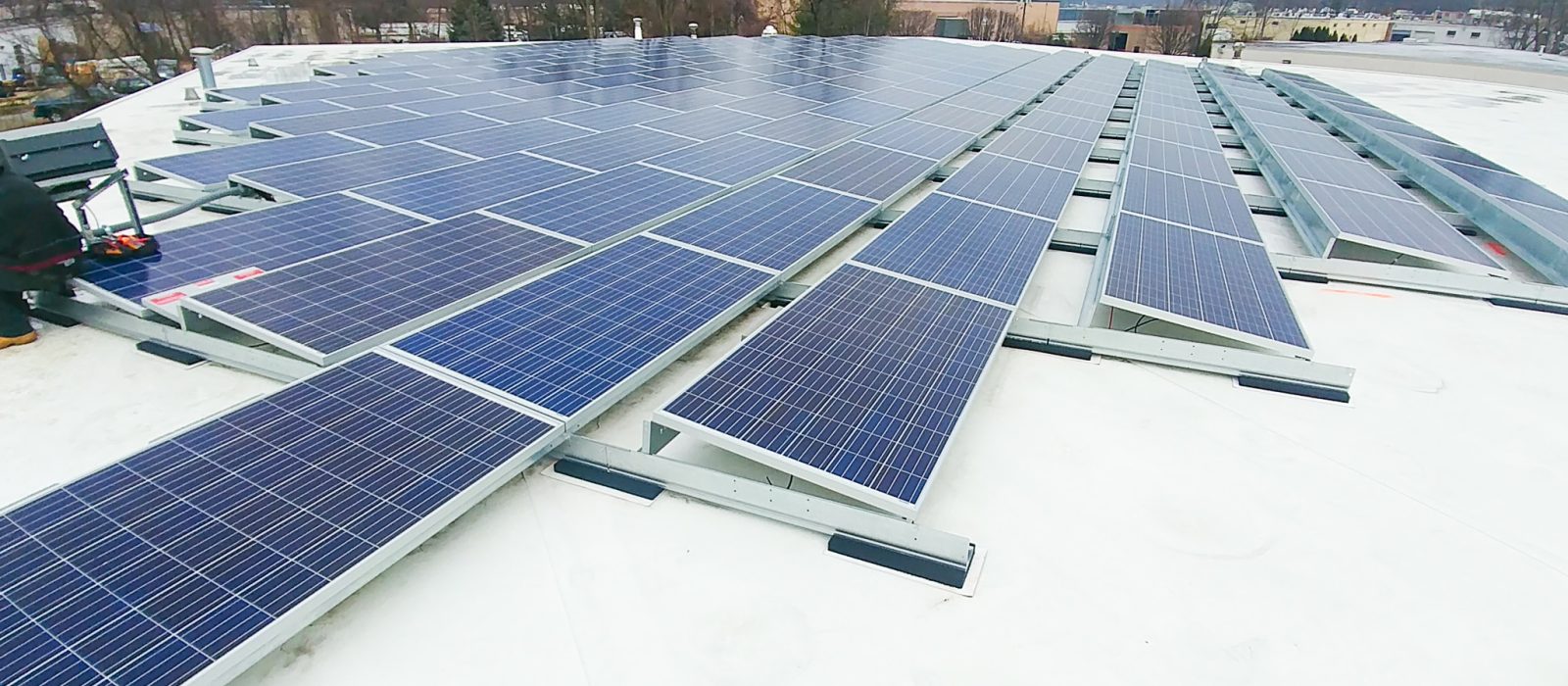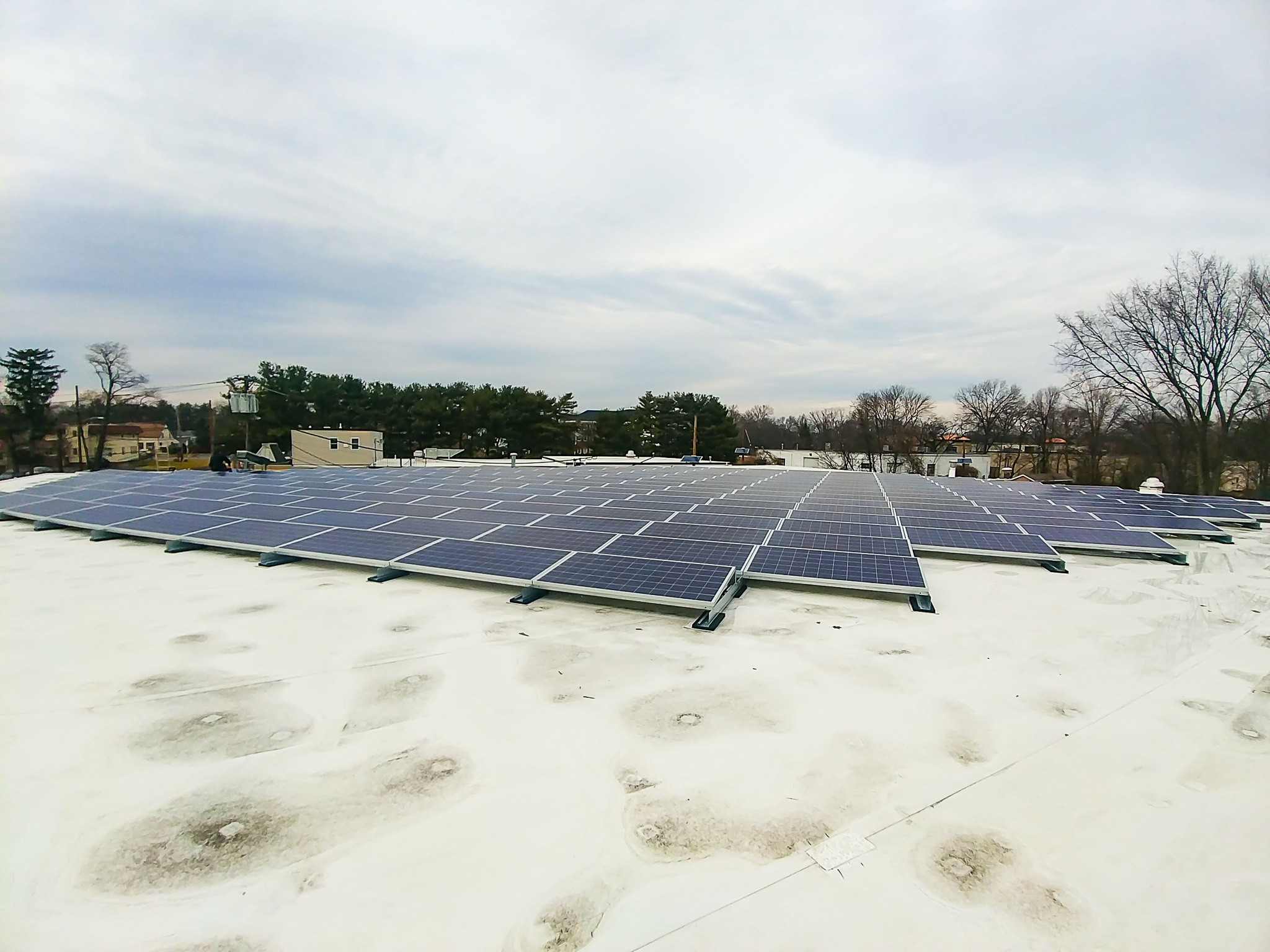
Sparks Belting Goes Solar
Here comes the sun! Sparks Belting has teamed up with Solar Landscape to bring solar power to our facility in Fairfield, NJ. This not only makes us a greener organization but helps reduce our carbon footprint.
In 2016, I was contacted by Solar Landscape to see if we would be interested in solar power for our facility in Fairfield, NJ. I believe we all have a responsibility to steward the planet. Conveyor belting is a large contributor to the use of fossil fuels and there are limited opportunities to reduce our carbon footprint. Due to the construction of conveyor belting, it doesn’t lend itself to recycling. I was excited about an opportunity to not only become a greener organization but also to reduce our overall cost.
We began the process with a meeting to talk about the process of acquiring and maintaining the system, applying for solar credits, expected lifetime, etc. Solar systems are expensive and require unique maintenance characteristics. They are highly impacted by the amount of sunshine and the location or orientation to the available sunshine. Partnering with Solar Landscape and the State of New Jersey, we were granted acceptance in a program to assist with the cost, evaluate the effectiveness of a system designed for our electrical usage and physical location, and design and installation of the system.
We learned that there were two options available to us. In one option, we would own the system and be responsible for the maintenance and ultimate removal, as solar systems today have an effective lifespan of 25 years. The investment for ownership would have been $175,000 with payback at 9 years with a 15-year projected cost savings of $290,000. The second option was to own the system and utilize a solar loan from the local power supplier, PSE&G. The investment for this option was $127,000 with payback at 14 years and a 15-year project cost savings of $157,000. As we worked through this internally, changes were made to the government-sponsored solar program which allowed Solar Landscape to own, operate and maintain the system with an agreement that we would purchase all the power created under a Purchase Power Agreement (PPA). Solar Landscape is responsible to apply for and manage the solar credits issued by the state and federal governments, further reducing our need to learn and manage a non-core competency. The investment for the PPA was $0! Of the many advantages of the PPA, the significant factor is that we have a fixed energy cost for 20 years which is 36% below 2018 rates.

We decided to proceed with the PPA agreement and an engineer was brought in to evaluate the building to ensure the roof could handle the load of the system. During this process it was determined that we should upgrade our roof membrane prior to installing the solar system to minimize the risk that we would have to replace it during the system's lifetime, incurring costs to uninstall and reinstall. Solar Landscape recommended several vendors for roof systems and we ultimately chose a TPO (thermoplastic olefin) roofing system specifically designed to enhance and support solar installation, which as an added benefit, has reduced the interior temperature of our production area by about 10 degrees in the summer. This TPO system and the solar installation were approved by our insurance carrier, FM Global, and due to its design did not require removal of the previous roofing system. All other quoted products would have required a tear-off, further adding to the landfill and increasing the overall cost. This TPO roofing system, designed and manufactured by GAF, carries a 25-year full labor and material warranty which lines up with the lifetime of the solar system.
Construction began in early 2018 and the system began supplying power in mid-2018 with a forecast electric cost reduction of $6,500 in the first year. Additionally, the installation is a net-metering system, meaning we stay connected to the grid, and when we are producing more power than we use it feeds to the grid and effectively creates a credit for us. When we need to utilize the grid for power then we work off the credit first before we begin paying for higher-priced energy.

All Blog Posts